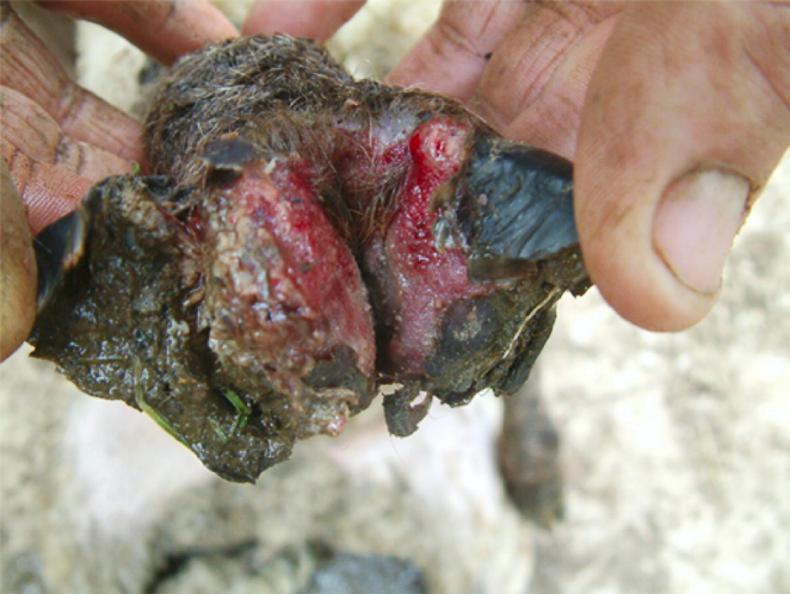
LOYALTY CODE:
The paper code cannot be redeemed when browsing in private/incognito mode. Please go to a normal browser window and enter the code there

LOYALTY CODE:
The paper code cannot be redeemed when browsing in private/incognito mode. Please go to a normal browser window and enter the code there
This content is copyright protected!
However, if you would like to share the information in this article, you may use the headline, summary and link below:
Title: In pictures: six causes of lameness in sheep
Successfully tackling lameness in sheep starts with an accurate diagnosis of what's causing the problem.
https://www.farmersjournal.ie/in-pictures-six-causes-of-lameness-in-sheep-233657

LOYALTY CODE:
The paper code cannot be redeemed when browsing in private/incognito mode. Please go to a normal browser window and enter the code there

CODE ACCEPTED

You have full access to farmersjournal.ie on this browser until 9pm next Wednesday. Thank you for buying the paper and using the code.

CODE NOT VALID
Please try again or contact us.
For assistance, call 01 4199525
or email subs@farmersjournal.ie
Sign in

Incorrect details
Please try again or reset password
If would like to speak to a member of
our team, please call us on 01-4199525
Reset
password
Please enter your email address and we
will send you a link to reset your password

If would like to speak to a member of
our team, please call us on 01-4199525
Link sent to
your email
address
![]()
We have sent an email to your address.
Please click on the link in this email to reset
your password. If you can't find it in your inbox,
please check your spam folder. If you can't
find the email, please call us on 01-4199525.
![]()
Email address
not recognised
There is no subscription associated with this email
address. To read our subscriber-only content.
please subscribe or use the reader loyalty code.
If would like to speak to a member of
our team, please call us on 01-4199525
 This is a subscriber-only article
This is a subscriber-only article
Update Success !
Surveys conducted in the UK and Ireland have shown that conditions causing lameness are frequently misdiagnosed. Where this is the case, it can lead to incorrect treatments being adopted and symptoms failing to improve or getting progressively worse, despite the best efforts of the flock owner.
There are six main conditions causing lameness in sheep and these are detailed below. Each disease has different causative agents and, therefore, can require a different approach to treatment.
Previous recommendations saw routine foot paring being used as a management practice. This approach has changed. The advice now recommended is to tackle lameness in a flock health plan approach. Routine foot-paring should no longer be used and only sheep that require hoof trimming should be pared.
Identifying the cause of lameness is only one part of the solution. Tackling the problem effectively will also require you to calculate how serious the problem is. This can only be achieved by recording incidences of lameness, treatments, etc. Over time, these records will allow you to accurately see if the problem is improving or getting worse.
The target incidence of lameness in a flock should be about 5%. Once this level is achieved, preventative measures, such as foot-bathing at regular intervals, should be sufficient to control lameness at a low level. Grazing management and culling practices also have a role to play. Repeat offenders should be identified and recorded as it is usually these sheep that end up giving the majority of problems.
Where animals fail to recover, despite treatment, they should be culled from the flock and their offspring should not be retained as breeding replacements. Problem sheep should also be isolated from the flock and only allowed to rejoin once you are satisfied they are healthy and present no risk of spreading infection.
In the case with foot-rot, bacteria only survive on pasture for two weeks. Therefore, treatment followed by grazing on clean swards can greatly aid in reducing lameness issues.
Scald 
Footrot
CODD 
Toe granuloma or strawberry foot 
Foot abscess
Shelly hoof (white line disease)
Pictures: Courtesy of Jasmeet Kaler and Laura Green, University of Warwick
SHARING OPTIONS: